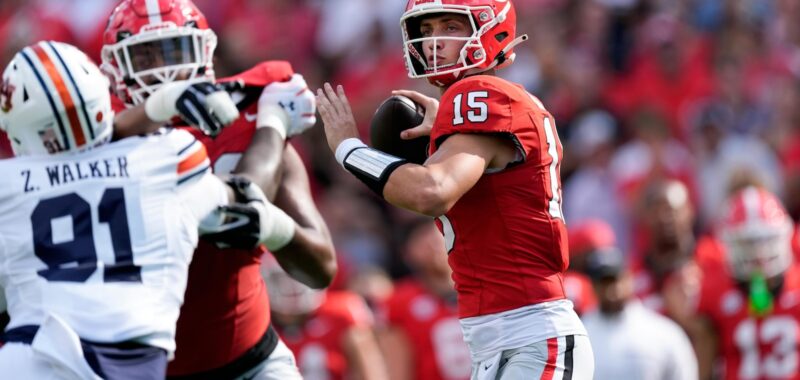A judge granted preliminary approval Monday to the $2.78 billion legal settlement that would transform college sports by allowing schools to pay players.
U.S District Judge Claudia Wilken released an order setting a timeline for a deal that would put millions of dollars into the pockets of college athletes, who can begin applying for payment on Oct. 18.
A final hearing is set for April 7, 2025, the day of college basketball’s national title game. If finalized, the deal would allow the biggest schools to establish a pool of about $21.5 million in the first year to distribute to athletes via a revenue-sharing plan. Athletes would still be able to cut name, image and likeness deals with outside groups.
“We are pleased that we are one step closer to a revolutionary change in college athletics that will allow billions in revenue sharing,” said plaintiff attorney Steve Berman.
The judge’s approval comes 11 days after attorneys tweaked wording in the original settlement agreement to address Wilken’s concerns. The main change involved getting rid of the word “boosters” and replacing it with a better-defined description of whose potential NIL deals would be subject to oversight by a neutral arbitrator once the deal goes through.
That did not, however, strike to the heart of the settlement, which sets up a revenue-sharing arrangement between schools and the athletes. The $21.5 million figure comes from the 22% of average revenue that power conference schools generate through media rights, tickets and other sources. It will be recalculated periodically through the 10-year window that the agreement covers.
“We are thrilled by Judge Wilken’s decision to give preliminary approval to the landmark settlement that will help bring stability and sustainability to college athletics while delivering increased benefits to student-athletes for years to come,” NCAA President Charlie Baker said. “Today’s progress is a significant step in writing the next chapter for the future of college sports.”
This settlement also allows former players to apply for payments to make up for lost revenue they would have received through NIL deals that weren’t allowed in college sports before 2021. It sets up a framework to regulate future NIL deals and replaces scholarship caps with “roster limits,” which will grow to 105 for football, the biggest sport at most major universities.
This settlement resolves three major antitrust lawsuits filed against the NCAA, including one spearheaded by Grant House, a former swimmer at Arizona State. Berman’s law firm says the value of new payments and benefits to college athletes is expected to exceed $20 billion over 10 years.
Still unknown, however, is how long the terms of this deal will last. Litigation regarding the rights of players to unionize and potentially be considered employees remains unsettled. Meanwhile, the NCAA is pushing for federal legislation to knit together a streamlined policy for NIL, which is currently regulated by a patchwork of state laws, legal settlements and NCAA rules.
___
AP sports: https://apnews.com/sports

